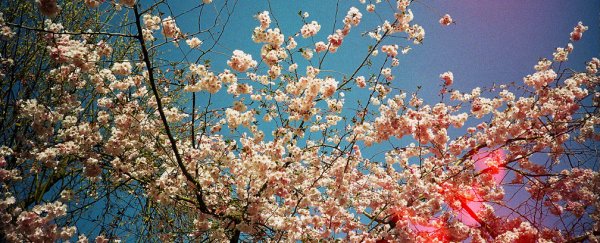If summer and spring make you think of vivid, intense colours while winter recalls more subdued tones, there's a perfectly good reason for that. The natural environment around us changes during the seasons, with hotter weather generally bringing out more natural colour in our surroundings due to a greater abundance of plant life and greenery. Winter, on the other hand, is marked by shorter, darker days and less obvious displays of colour in our external environment.
But what scientists didn't know until now is that this change in the amount of colour surrounding us has an impact on the way we perceive colour. Researchers at the University of York in the UK have shown for the first time that our perception of colour actually changes throughout the year, as our brains try to equalise the differing colour levels presented by summer and winter.
"What we are finding is that between seasons our vision adapts to changes in environment," said Lauren Welbourne, lead author of the study, in a statement. "So in summer when there is a much larger amount of foliage, our visual system has to account for the fact that, on average, we are exposed to far more green."
To test their theory that colour perception was affected by the natural world, the researchers conducted an experiment with 67 men and women across two distinct seasons: English winter (January) and English summer (June). The participants were placed in a darkened room and given control of a colourimeter that let them adjust a dial until they found 'unique yellow'.
Human eyes can identify four unique hues – blue, green, yellow, and red – that do not contain mixtures of any other colours. Unique yellow (UY) is special among even these unique colours, as it is stable across large populations. Despite the fact that people's eyes are different, basically everyone is able to agree on what unique yellow is at a given moment in time.
However, with the experiment occurring across two starkly opposing seasons, the same participants identified unique yellow as two different colours, indicating what the researchers call "a significant seasonal change in UY settings".
"In York, you typically have grey, dull winters and then in summer you have greenery everywhere," said Welbourne. "Our vision compensates for those changes and that, surprisingly, changes what we think 'yellow' looks like. It's a bit like changing the colour balance on your TV."
The findings, which are published in Current Biology, don't have any immediate practical applications, but they do tell us more about the way our brains work and may help lay the groundwork for further psychological study.
"This is the first time natural changes in the environment have been shown to affect our perception of colour," said Welbourne. "For me, as a vision scientist, it is fascinating as it is telling us more about how visual processing works."
"Although there's no disorder that this can fix, the more we learn about how vision and colour in particular is processed, the better we can understand exactly how we see the world. This can have knock-on effects on the way we diagnose and treat visual disorders."
